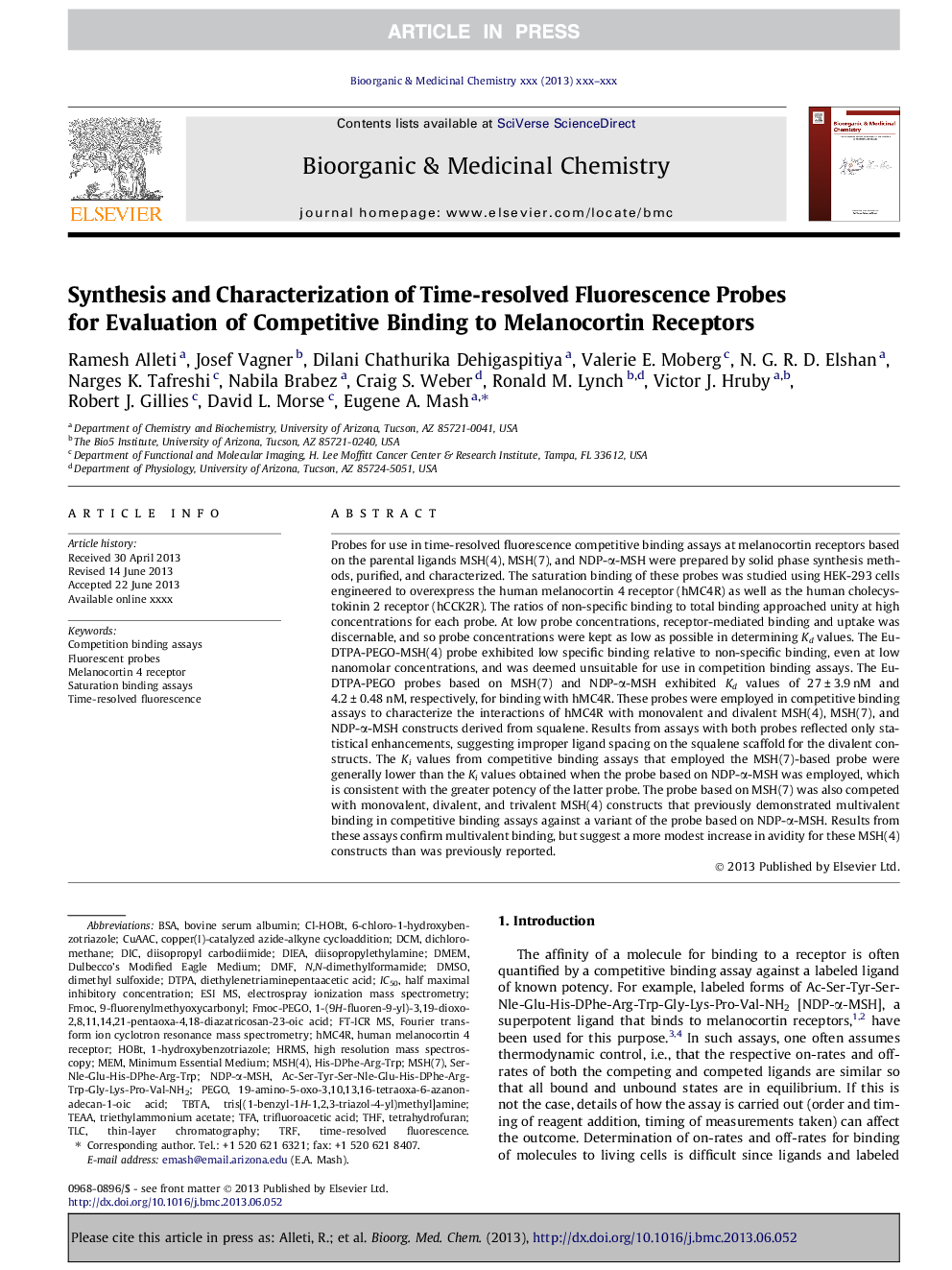| کد مقاله | کد نشریه | سال انتشار | مقاله انگلیسی | نسخه تمام متن |
|---|---|---|---|---|
| 10584449 | 981334 | 2013 | 10 صفحه PDF | دانلود رایگان |
عنوان انگلیسی مقاله ISI
Synthesis and Characterization of Time-resolved Fluorescence Probes for Evaluation of Competitive Binding to Melanocortin Receptors
ترجمه فارسی عنوان
سنتز و مشخص نمودن پروب های فلورسانس حل شده در زمان برای ارزیابی اتصال های رقابتی به گیرنده های ملانوکورتین
دانلود مقاله + سفارش ترجمه
دانلود مقاله ISI انگلیسی
رایگان برای ایرانیان
کلمات کلیدی
HRMSTEAAtris[(1-benzyl-1H-1,2,3-triazol-4-yl)methyl]aminediisopropyl carbodiimideCl-HOBtTBTACopper(I)-catalyzed azide-alkyne cycloadditionCuAACDIEAESI MSFMOCHOBtDTPATFATLCIC50DCMDMFDICDMEMTHFFT-ICR MSTRF1-hydroxybenzotriazole - 1-هیدروکسی بنزوتریازول6-chloro-1-hydroxybenzotriazole - 6-کلرو-1-هیدروکسی بنزوتریازولBSA - BSADMSO - DMSODulbecco’s modified Eagle medium - Modified Eagle اصلاح شده DulbeccoN,N-dimethylformamide - N، N-dimethylformamidebovine serum albumin - آلبومین سرم گاوTriethylammonium acetate - استات TriethylammoniumElectrospray Ionization Mass Spectrometry - اسپکترومتر جرم یونیزاسیون ElectrosprayTrifluoroacetic acid - اسید TrifluoroaceticTetrahydrofuran - تتراهیدروفورانminimum essential medium - حداقل حداقل مورد نیازDiethylenetriaminepentaacetic acid - دی اتیلنتریمین پنتا اسیدهای اسیدdiisopropylethylamine - دی ایزوپروپیلایتیلامینDichloromethane - دیکلورمتانDimethyl sulfoxide - دیمتیل سولفواکسیدHigh resolution mass spectroscopy - طیف سنجی جرمی با وضوح بالاFourier transform ion cyclotron resonance mass spectrometry - طیف سنجی جرمی رزونانس یون سی یونیت تبدیل فوریهTime-resolved fluorescence - فلورسانس حل شده در زمانMEM - مامانhalf maximal inhibitory concentration - نیمه حداکثر غلظت مهاریFluorescent probes - پروب های فلورسنتthin-layer chromatography - کروماتوگرافی نازک لایهmelanocortin 4 receptor - گیرنده ملانوکورتین 4
موضوعات مرتبط
مهندسی و علوم پایه
شیمی
شیمی آلی
چکیده انگلیسی
Probes for use in time-resolved fluorescence competitive binding assays at melanocortin receptors based on the parental ligands MSH(4), MSH(7), and NDP-α-MSH were prepared by solid phase synthesis methods, purified, and characterized. The saturation binding of these probes was studied using HEK-293 cells engineered to overexpress the human melanocortin 4 receptor (hMC4R) as well as the human cholecystokinin 2 receptor (hCCK2R). The ratios of non-specific binding to total binding approached unity at high concentrations for each probe. At low probe concentrations, receptor-mediated binding and uptake was discernable, and so probe concentrations were kept as low as possible in determining Kd values. The Eu-DTPA-PEGO-MSH(4) probe exhibited low specific binding relative to non-specific binding, even at low nanomolar concentrations, and was deemed unsuitable for use in competition binding assays. The Eu-DTPA-PEGO probes based on MSH(7) and NDP-α-MSH exhibited Kd values of 27 ± 3.9 nM and 4.2 ± 0.48 nM, respectively, for binding with hMC4R. These probes were employed in competitive binding assays to characterize the interactions of hMC4R with monovalent and divalent MSH(4), MSH(7), and NDP-α-MSH constructs derived from squalene. Results from assays with both probes reflected only statistical enhancements, suggesting improper ligand spacing on the squalene scaffold for the divalent constructs. The Ki values from competitive binding assays that employed the MSH(7)-based probe were generally lower than the Ki values obtained when the probe based on NDP-α-MSH was employed, which is consistent with the greater potency of the latter probe. The probe based on MSH(7) was also competed with monovalent, divalent, and trivalent MSH(4) constructs that previously demonstrated multivalent binding in competitive binding assays against a variant of the probe based on NDP-α-MSH. Results from these assays confirm multivalent binding, but suggest a more modest increase in avidity for these MSH(4) constructs than was previously reported.
ناشر
Database: Elsevier - ScienceDirect (ساینس دایرکت)
Journal: Bioorganic & Medicinal Chemistry - Volume 21, Issue 17, 1 September 2013, Pages 5029-5038
Journal: Bioorganic & Medicinal Chemistry - Volume 21, Issue 17, 1 September 2013, Pages 5029-5038
نویسندگان
Ramesh Alleti, Josef Vagner, Dilani Chathurika Dehigaspitiya, Valerie E. Moberg, N.G.R.D. Elshan, Narges K. Tafreshi, Nabila Brabez, Craig S. Weber, Ronald M. Lynch, Victor J. Hruby, Robert J. Gillies, David L. Morse, Eugene A. Mash,
